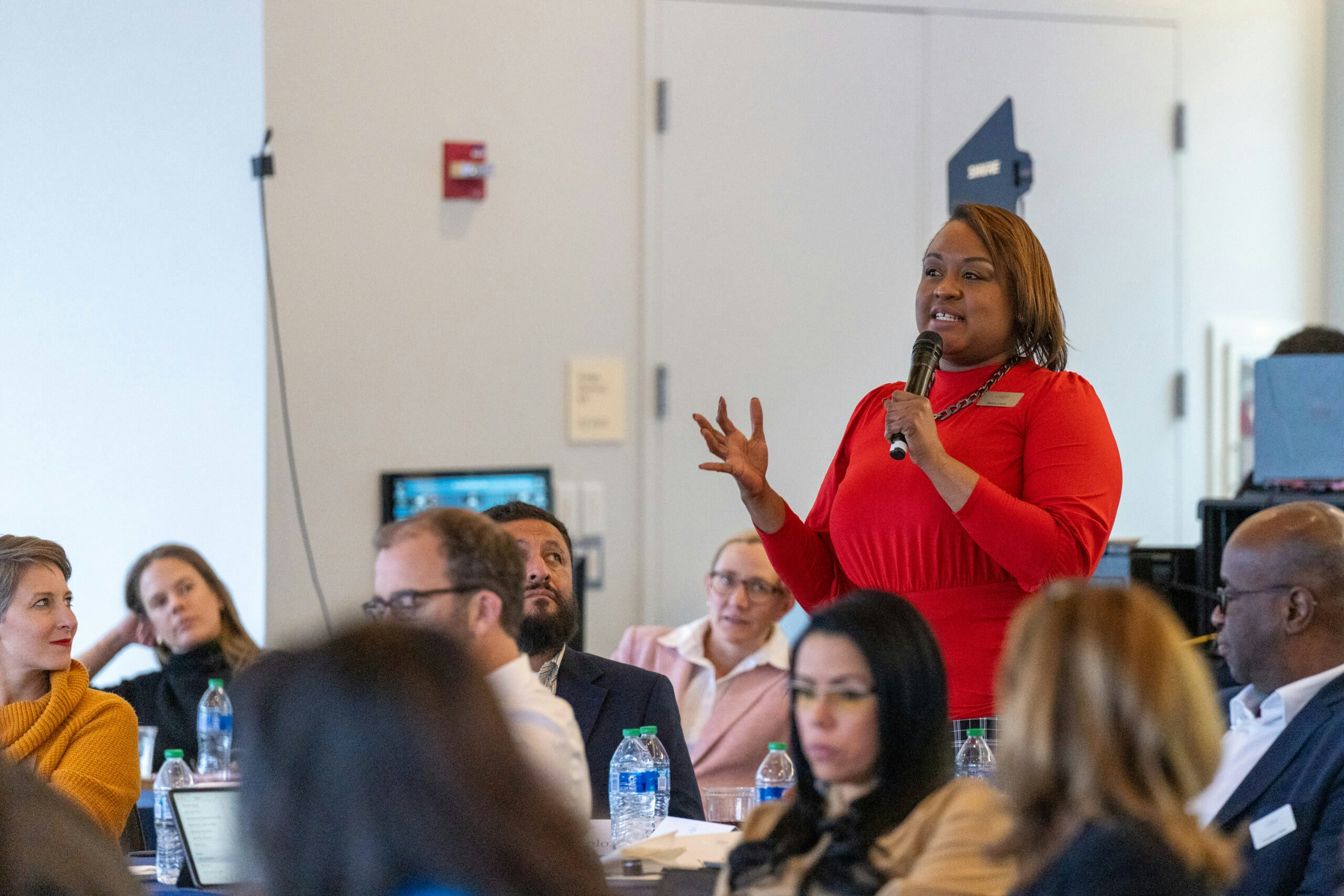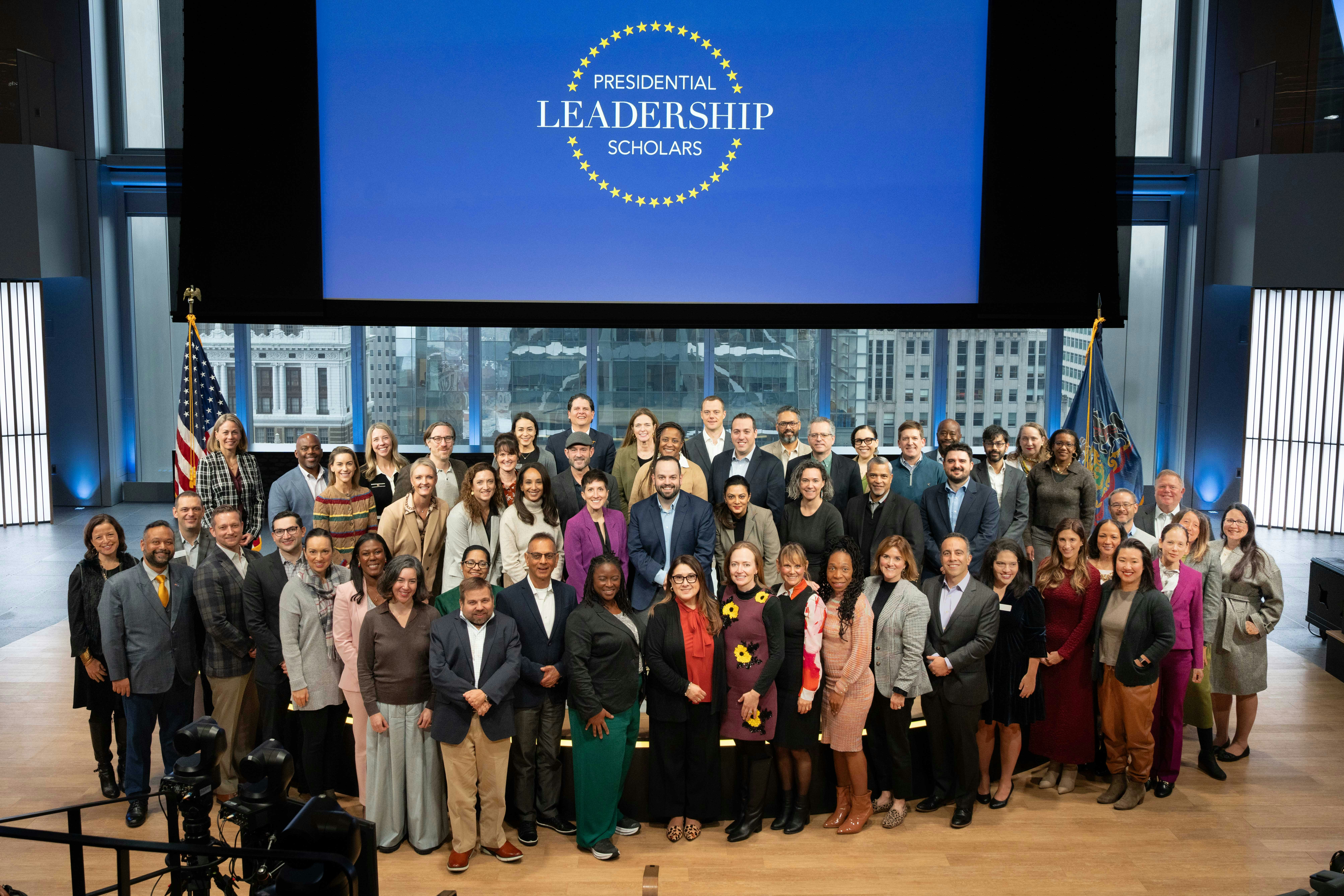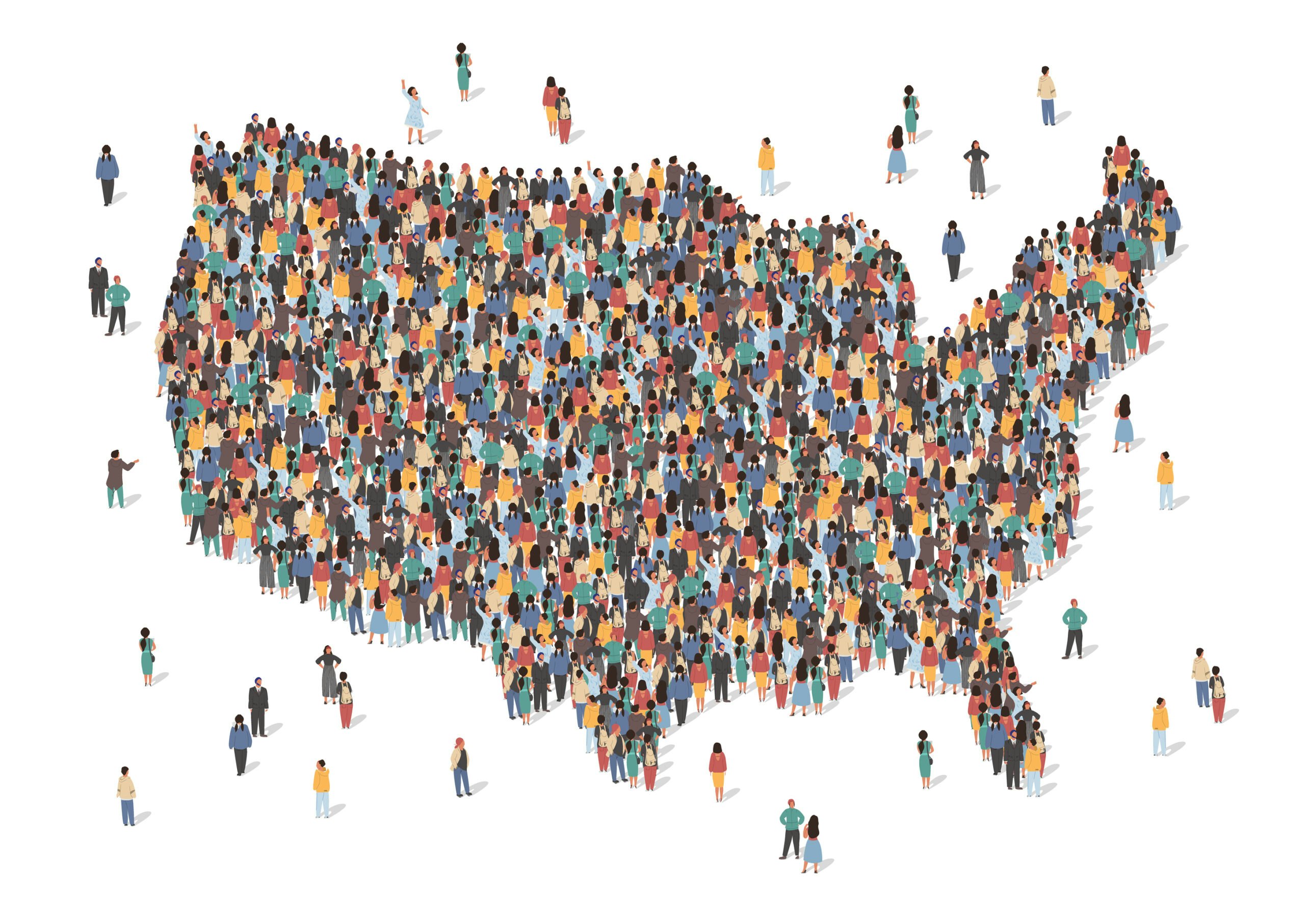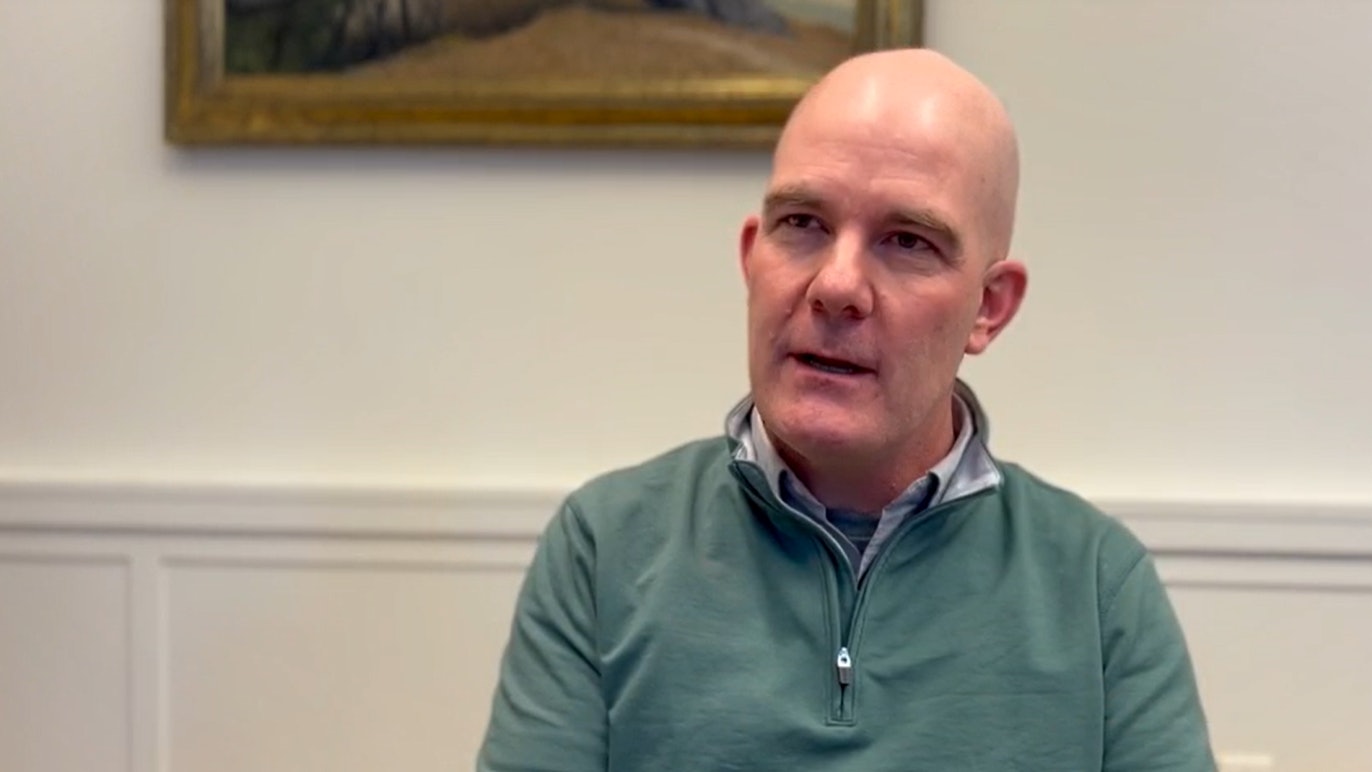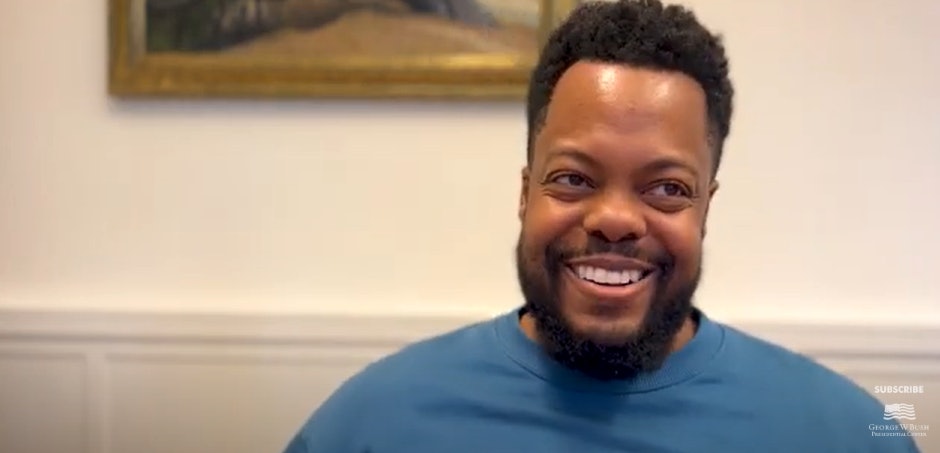Over the coming months, the George W. Bush Institute will explore the nature of pluralism and how it’s working in our country. Improving our commitment to pluralism is intrinsically tied to strengthening our democracy.
Our big, diverse democracy would sink without pluralism.
Yet a Philanthropy for Active Civic Engagement survey reports nearly 40% of registered voters are unfamiliar with the term. More than 40% hold either a neutral or negative view of pluralism. And only 19% think of it positively.
Pluralism allows us to coexist
America is a nation of more than 330 million quirky people with vastly different outlooks and experiences. Even so, we share a common story based on democratic values that bind us as a nation. We strive toward lofty ideals like all people being “created equal … with certain unalienable rights” such as “life, liberty, and the pursuit of happiness.” Pluralism is the mechanism within this narrative that helps us to peacefully coexist by reconciling our myriad differences with shared values.
Specifically, pluralism is social tolerance for individuals or groups who have different backgrounds, views, or beliefs. It also provides space for them to express views and practice their beliefs without reprisal – even when they conflict with others.
America’s commitment to pluralism, however, understands that such beliefs and practices should not violate basic Bill of Rights or other legal protections. Nor should they be imposed upon the unwilling without any recourse.
Some may view pluralism merely as “diversity” and “inclusion” that make us feel good. This would likely include efforts to improve the representation of marginalized groups in public and private life. It may also open space for compromise or new ideas that spur innovation.
Those are worthy outcomes, but pluralism challenges us to go beyond a narrow “feel good” approach. It also incorporates diversity and inclusion we may not like.
Specifically, pluralism is social tolerance for individuals or groups who have different backgrounds, views, or beliefs. It also provides space for them to express views and practice their beliefs without reprisal – even when they conflict with others.
Think about your morning commute. For many, that’s when we encounter a horde of drivers, pedestrians, bikers, squirrels, and construction. Each has different patterns and habits that potentially affect us. Not all of those dealings are pleasant, but we share the space in relative peace despite honking horns, crude gestures, or obnoxious bumper stickers. And while traffic laws govern general conduct, bad driving isn’t usually a crime.
We endure this chaos because we have places to go and things to do. The miracle is that these diverse masses share roads without devolving into some Mad Max hellscape (most days).
In these ways, pluralism simultaneously rewards and frustrates depending upon circumstances. Some days it’s your ally by expanding access for individuals or groups into a new space. Other days, it’s the “bad traffic” experience that allows practices you think are wrong. Either way, the commitment to pluralism provides broad social peace by allowing most people to live how they wish.
If we fail to appreciate and exercise these vital elements of pluralism, our commitment to the democratic principles we pledge fealty to means nothing. And concepts like freedom of expression, freedom of religion and association, federalism, and local government are sapped of any potency or meaning.
This also means the guardrails of a pluralistic society go beyond mild tolerance. To maintain peace and ensure the protection of cherished rights, they must extend to allow for things you believe objectionable, absurd, or unpopular.
[A] commitment to pluralism is the best path for managing our differences. Absent that, it’s easy to imagine escalating violence among groups, encroaching authoritarianism, or even the dissolution of the Union.
For example, there are traditional faith communities in the United States holding views that are controversial among some Americans. Critics may argue that such communities are hateful because of practices such as barring women from joining the clergy or declining to perform or recognize same sex marriages.
More traditional communities have similar feelings toward those who support events like drag queen story hours.
And yet, pluralism allows for private or local entities to be exclusive, unpopular, or taboo relative to others in their community. Think of all the groups with conflicting views that thrive alongside one another in the United States. They include the Pennsylvania Dutch, Black Lives Matter, California, the Catholic Church, Texas, and Hollywood, to name just a very few. All should be generally acceptable if people within such communities are, again, afforded constitutional protections and have freedom to exit them.
Let people and groups live how they want to live – even if we disapprove. That, of course, doesn’t exempt any community from debate or criticism of their beliefs within the public square. But a commitment to pluralism means they have the right to exist alongside others.
Madison’s enduring vision
We may not have a choice in the matter unless we’re willing to do away with democracy altogether. James Madison’s Federalist No. 10 illustrates how diverse and competing groups – for better or worse – are an inevitable outcome of free societies.
In his essay, Madison details how one could suppress “faction” in America’s new republic. He defines that term as “a number of citizens, whether amounting to a majority or minority of the whole, who are united and actuated by some common impulse of passion, or of interest, adverse to the rights of other citizens, or to the permanent and aggregate interests of the community.”
James Madison’s Federalist No. 10 illustrates how diverse and competing groups – for better or worse – are an inevitable outcome of free societies.
Madison, who was wary of faction, suggests this threat could be “cured” in one of two ways. Either remove the very liberty from the system that allows factions to develop or ensure that everyone in the society possesses the same opinions and interests.
About the first remedy, Madison says, wishing to abolish liberty because it nourishes faction is like wanting to annihilate air because it can flame fires. Both wishes are folly and impossible. And, about the second “cure,” Madison correctly writes: “As long as the reason of man continues fallible, and he is at liberty to exercise it, different opinions will be formed.”
Given those alternatives, a commitment to pluralism is the best path for managing our differences. Absent that, it’s easy to imagine escalating violence among groups, encroaching authoritarianism, or even the dissolution of the Union.
So yes, pluralism is a big deal! The more heterogenous America becomes – religiously, ethnically, racially, ideologically – the more our country’s stability and endurance will rely upon it. Strengthening the democracy we all love depends upon nothing less.







